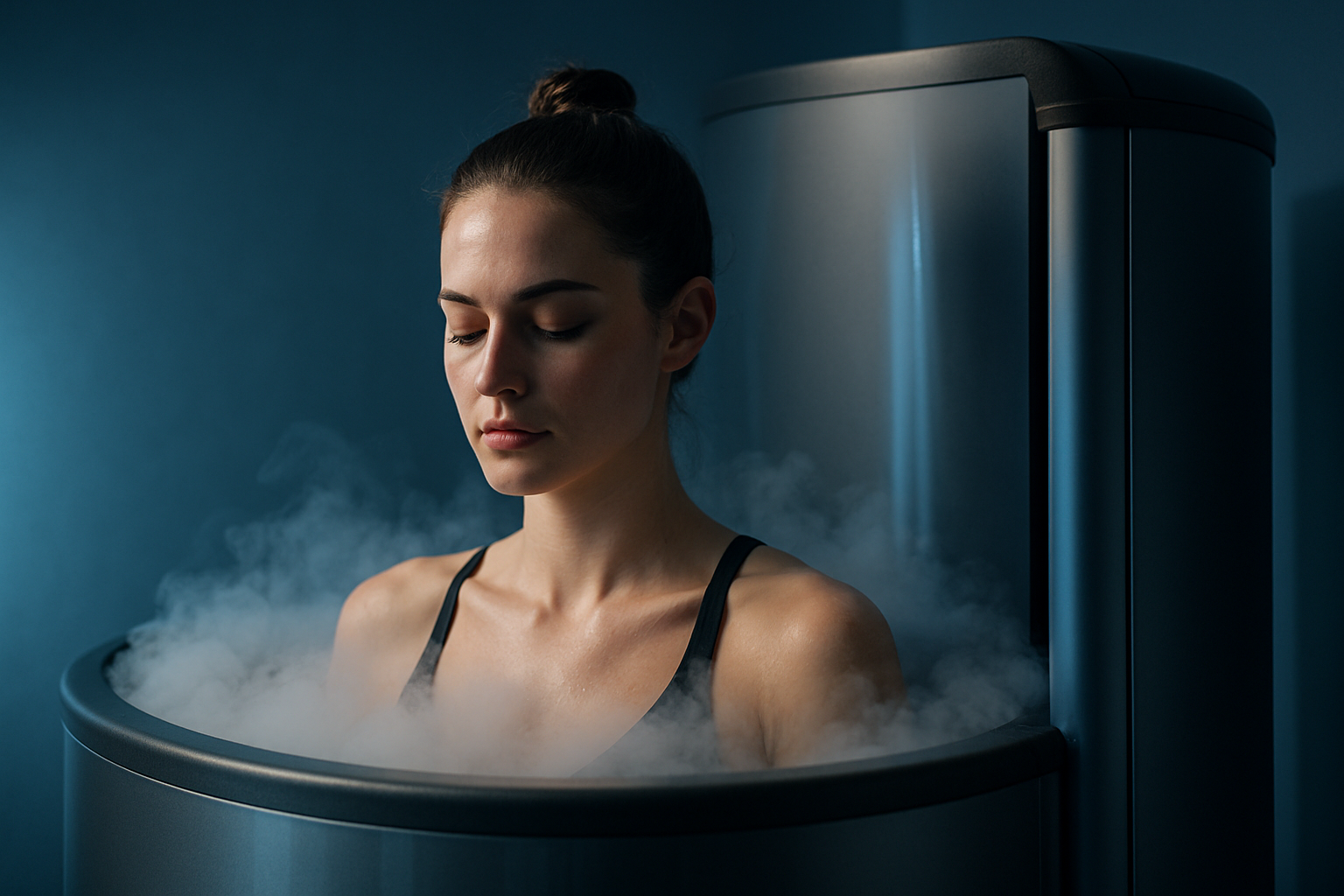Cryotherapy: The Cold Truth Behind Wellness's Coolest Trend
In the ever-evolving world of wellness and beauty, a chilling new practice has emerged, captivating the attention of athletes, celebrities, and health enthusiasts alike. Cryotherapy, the art of exposing the body to extremely cold temperatures for short periods, has rapidly gained traction as a cutting-edge treatment for everything from muscle recovery to skin rejuvenation. This icy innovation promises a myriad of benefits, from reducing inflammation to boosting metabolism, all while subjecting participants to temperatures as low as -250°F. As the popularity of cryotherapy continues to soar, it's time to dive deep into the frosty world of this trendy treatment and uncover the science, benefits, and potential risks behind the big chill.

The principle behind cryotherapy is simple: extreme cold exposure triggers the body’s natural healing mechanisms. When subjected to frigid temperatures, blood vessels constrict, reducing blood flow to the extremities and redirecting it to vital organs. This process, known as vasoconstriction, is believed to reduce inflammation and flush out toxins. As the body warms up post-treatment, increased blood flow is thought to deliver oxygen and nutrients more efficiently to tissues, potentially accelerating healing and recovery.
The Cryotherapy Experience: From Nitrogen to Needles
While whole-body cryotherapy chambers remain the most recognizable form of treatment, the cryotherapy industry has expanded to offer a variety of cold-based therapies. The most common types include:
-
Whole-Body Cryotherapy (WBC): Participants stand in a chamber filled with nitrogen vapor for 2-3 minutes, exposing their entire body (except the head) to temperatures between -200°F and -300°F.
-
Localized Cryotherapy: This targeted approach uses a handheld device to apply cold to specific areas of the body, often used for pain management or skin treatments.
-
Cryofacials: A specialized form of localized cryotherapy that focuses on the face, purported to tighten pores, reduce wrinkles, and boost collagen production.
-
Cryosurgery: A medical procedure that uses extreme cold to destroy abnormal tissue, commonly used in the treatment of certain skin conditions and early-stage cancers.
The Cool Benefits: What Science Says
Proponents of cryotherapy claim a wide array of benefits, from improved athletic performance to enhanced mood. While research is still ongoing, some studies have shown promising results:
-
Pain Relief and Muscle Recovery: A 2021 systematic review published in the International Journal of Environmental Research and Public Health found that cryotherapy may be effective in reducing muscle soreness and improving recovery after exercise.
-
Skin Health: A small study published in the Journal of Cosmetic Dermatology in 2018 suggested that cryotherapy may improve skin tone and reduce the appearance of cellulite.
-
Mental Health: Research published in the Archives of Psychiatric Nursing in 2020 indicated that whole-body cryotherapy might have potential as an adjunct treatment for anxiety and depression.
-
Metabolism Boost: A 2018 study in the Journal of Clinical Medicine found that cryotherapy may increase energy expenditure and could potentially aid in weight management.
The Frosty Market: Cryotherapy’s Commercial Boom
The global cryotherapy market has experienced exponential growth in recent years. According to a report by Grand View Research, the market size was valued at $3.9 billion in 2020 and is expected to expand at a compound annual growth rate (CAGR) of 10.3% from 2021 to 2028. This surge can be attributed to increasing adoption in sports medicine, pain management, and the beauty industry.
Cryotherapy centers have popped up in major cities worldwide, offering single sessions or membership packages. The treatment has gained particular popularity among professional athletes and celebrities, further fueling public interest. Companies like CryoUSA and Impact Cryotherapy have emerged as leaders in the equipment manufacturing sector, continuously innovating to improve safety and efficacy.
The Risks: When Cold Comfort Becomes Uncomfortable
Despite its growing popularity, cryotherapy is not without risks. The U.S. Food and Drug Administration (FDA) has not cleared or approved whole-body cryotherapy devices for medical treatment of any specific condition. Potential risks include:
-
Frostbite and Cold Burns: Improper use or prolonged exposure can lead to skin damage.
-
Asphyxiation: In poorly ventilated chambers, nitrogen vapors can displace oxygen, leading to potentially fatal oxygen deficiency.
-
Cardiovascular Stress: Sudden exposure to extreme cold can be dangerous for individuals with heart conditions.
-
Skin Reactions: Some individuals may experience rashes or allergic reactions to the cold.
The Future of Frost: Where Cryotherapy is Headed
As research continues to explore the potential benefits and risks of cryotherapy, the industry shows no signs of cooling down. Emerging trends include:
-
Personalized Cryotherapy: AI-driven systems that adjust treatment parameters based on individual physiology and goals.
-
Cryotherapy Wearables: Development of portable devices for at-home use, allowing for more frequent and convenient treatments.
-
Integration with Other Therapies: Combining cryotherapy with other wellness practices like meditation or light therapy for enhanced benefits.
-
Medical Applications: Increased use in clinical settings for pain management and recovery in chronic conditions.
As cryotherapy continues to evolve, it remains a fascinating example of how ancient principles can be reimagined through modern technology. While the jury is still out on some of its claimed benefits, the cold, hard truth is that cryotherapy has firmly established itself as more than just a passing trend in the wellness industry. As with any emerging treatment, potential users should approach cryotherapy with a balance of curiosity and caution, always consulting with healthcare professionals before taking the plunge into the world of extreme cold.





